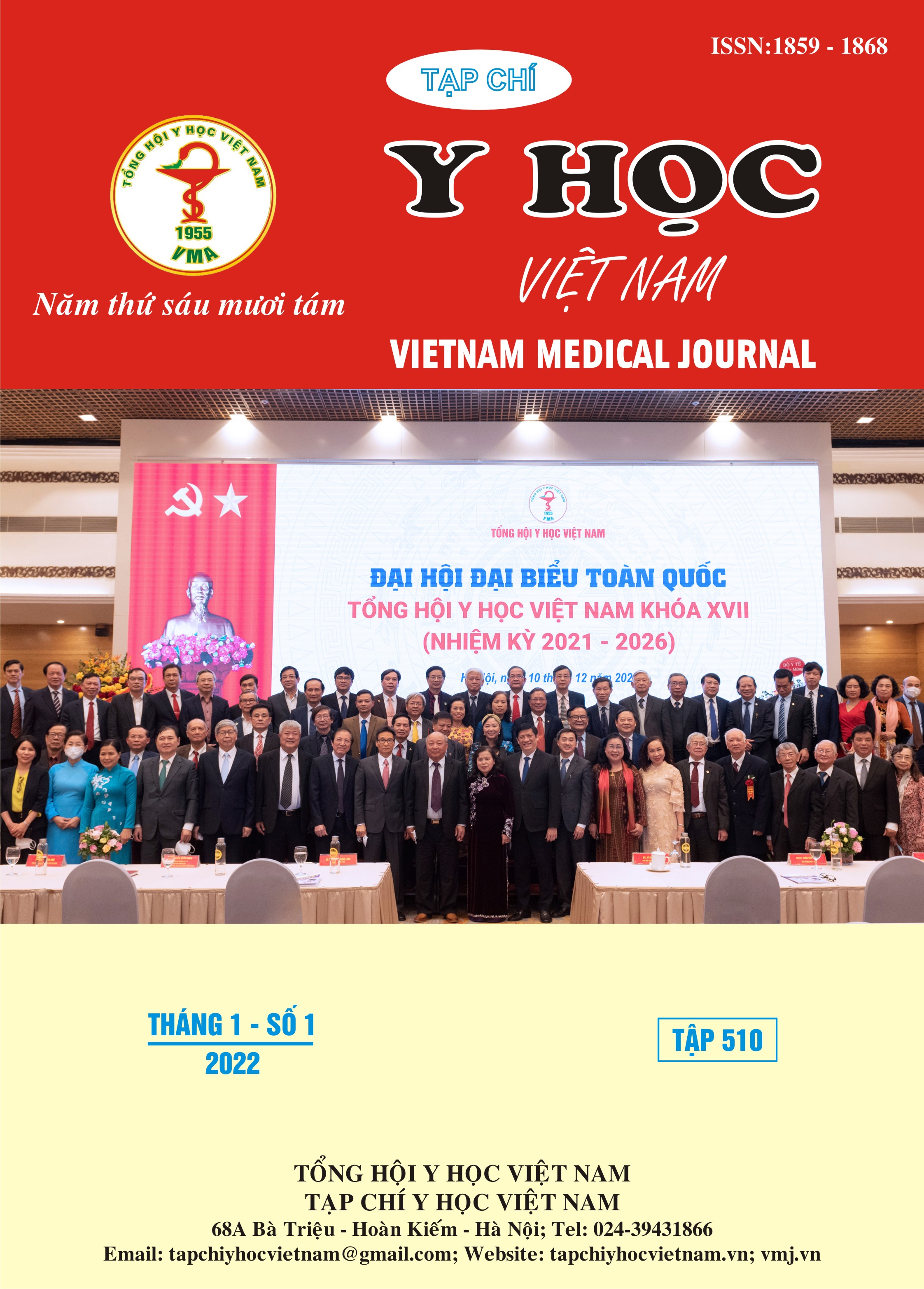CLINICAL FEATURES OF VOCAL TICS OF TOURETTE SYNDROME
Main Article Content
Abstract
Study aims to describe clinical features of vocal tics in children with Tourette syndrome. This is a cross-sectional study enrolled 77 children under 18 years olds, in the first diagnostic of Tourette syndrome (F95.2) at the outpatient clinic, Department of Psychiatry, National Children's Hospital. Results: In majority of cases, onset of vocal tics was before the age of 7, (62.3%). There is only 1,3% of patients have first symptoms after the age of 11. Most children were given diagnosis of Tourette syndrome between 8 and 11 years old (55.8%). There are 11 simple vocal tics were observed. The most common was throat clearing (66.2%), followed by snorting (18.2%) and spitting 15.6%. In our study, only 3 complex vocal tics occured in children with Tourette syndrome, including profanity (2.6%) and stuttering (2.6%) and unclear pronunciation (1.3%). Conclusion: Recognizing vocal tics are very important in early diagnosis of Tourette syndrome, which helps patients treated appropriately.
Article Details
Keywords
Tourette's syndrome, Tic characteristics, children
References
2. Leckman JF, King RA, Bloch MH. Clinical Features of Tourette Syndrome and Tic Disorders. J Obsessive-Compuls Relat Disord. 2014;3(4):372-379. doi:10.1016/j.jocrd.2014.03.004
3. Freeman RD, Fast DK, Burd L, Kerbeshian J, Robertson MM, Sandor P. An international perspective on Tourette syndrome: selected findings from 3,500 individuals in 22 countries. Dev Med Child Neurol. 2000;42(7):436-447. doi:10.1017/s0012162200000839
4. Schlander M, Schwarz O, Rothenberger A, Roessner V. Tic disorders: administrative prevalence and co-occurrence with attention-deficit/hyperactivity disorder in a German community sample. Eur Psychiatry J Assoc Eur Psychiatr. 2011;26(6):370-374. doi:10.1016/j.eurpsy.2009.10.003
5. Yang J, Hirsch L, Martino D, Jette N, Roberts J, Pringsheim T. The prevalence of diagnosed tourette syndrome in Canada: A national population-based study. Mov Disord Off J Mov Disord Soc. 2016;31(11):1658-1663. doi:10.1002/mds.26766
6. Ludolph AG, Roessner V, Münchau A, Müller-Vahl K. Tourette Syndrome and Other Tic Disorders in Childhood, Adolescence and Adulthood. Dtsch Ärztebl Int. 2012;109(48):821-288. doi:10.3238/arztebl.2012.0821
7. Hashemiyoon R, Kuhn J, Visser-Vandewalle V. Putting the Pieces Together in Gilles de la Tourette Syndrome: Exploring the Link Between Clinical Observations and the Biological Basis of Dysfunction. Brain Topogr. 2017;30(1):3-29. doi:10.1007/s10548-016-0525-z
8. Chee KY, Sachdev P. The clinical features of Tourette’s disorder: an Australian study using a structured interview schedule. Aust N Z J Psychiatry. 1994;28(2):313-318. doi:10.1080/00048679409075645


